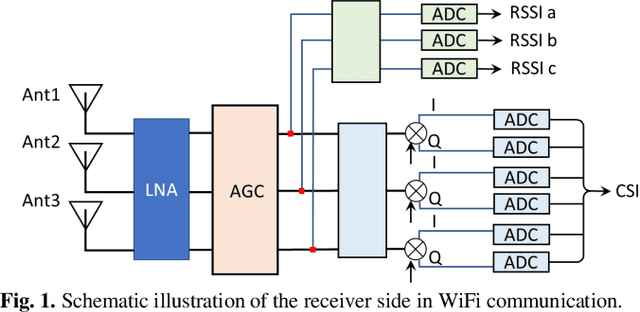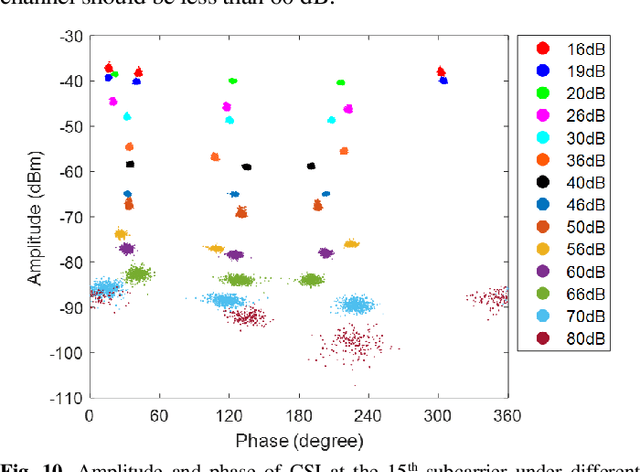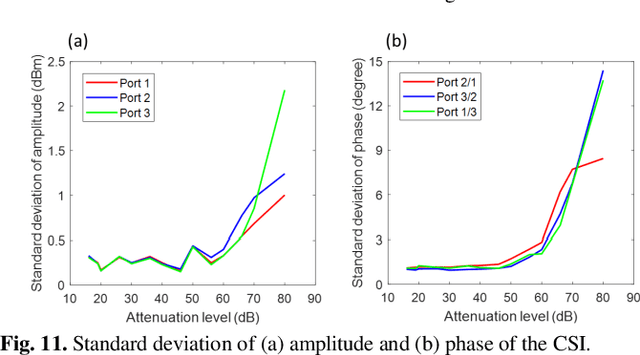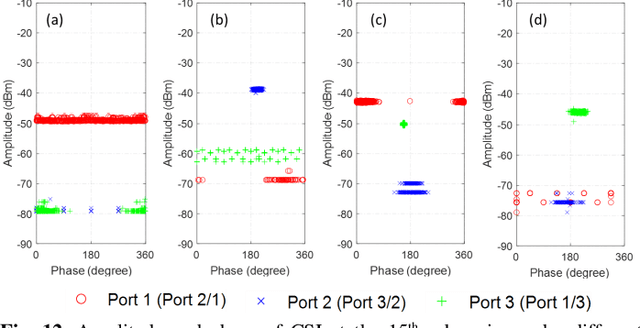RSSI-CSI Measurement and Variation Mitigation with Commodity WiFi Device
Paper and Code
Mar 24, 2022



Owing to the plentiful information released by the commodity devices, WiFi signals have been widely studied for various wireless sensing applications. In many works, both received signal strength indicator (RSSI) and the channel state information (CSI) are utilized as the key factors for precise sensing. However, the calculation and relationship between RSSI and CSI is not explained in detail. Furthermore, there are few works focusing on the measurement variation of the WiFi signal which impacts the sensing results. In this paper, the relationship between RSSI and CSI is studied in detail and the measurement variation of amplitude and phase information is investigated by extensive experiments. In the experiments, transmitter and receiver are directly connected by power divider and RF cables and the signal transmission is quantitatively controlled by RF attenuators. By changing the intensity of attenuation, the measurement of RSSI and CSI is carried out under different conditions. From the results, it is found that in order to get a reliable measurement of the signal amplitude and phase by commodity WiFi, the attenuation of the channels should not exceed 60 dB. Meanwhile, the difference between two channels should be lower than 10 dB. An active control mechanism is suggested to ensure the measurement stability. The findings and criteria of this work is promising to facilitate more precise sensing technologies with WiFi signal.
 Add to Chrome
Add to Chrome Add to Firefox
Add to Firefox Add to Edge
Add to Edge